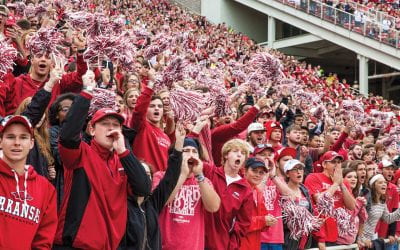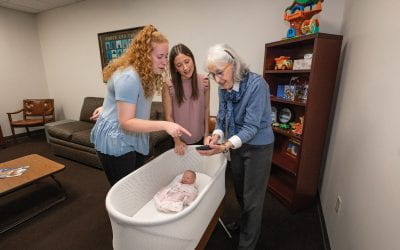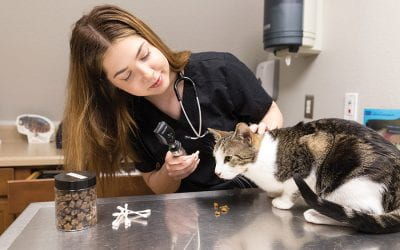
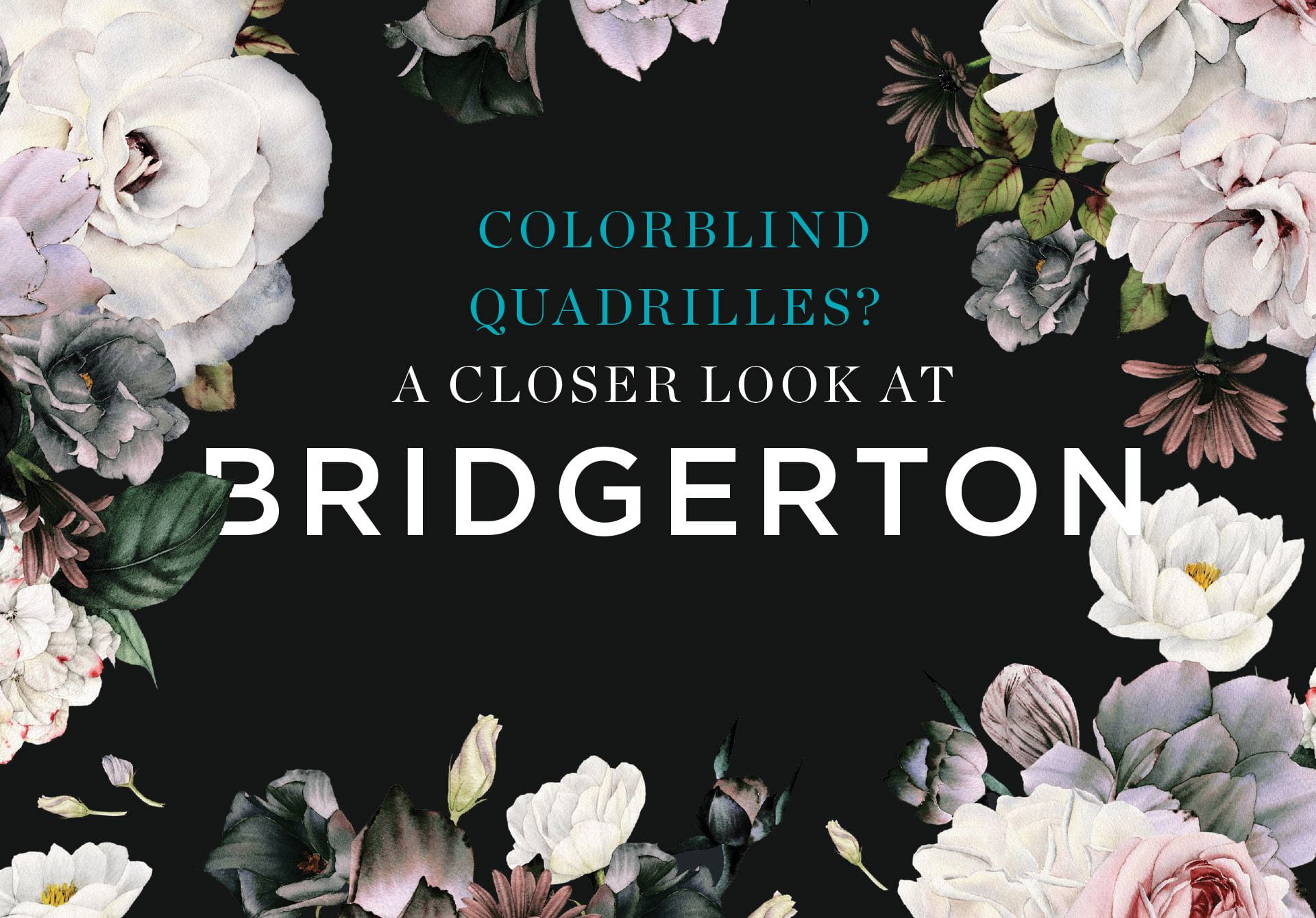
By Hiba Tahir
For her honors thesis, senior political science major Daniella Ruiz Cantú knew that she wanted to combine her studies in both sociology and political science with her interest in film. She was confused why, despite numerous successful films featuring people of color front and center — like Coco and Crazy Rich Asians — she continued to encounter racism in the news and in person. After taking Lisa Corrigan’s honors colloquium in communications, she learned of one possible explanation: the reinforcement of the white gaze in media.
“The white gaze, or the assumption that the default reader or observer of a piece of media is white, affects the way that people of color are shown in media,” Ruiz Cantú explained.
She wanted to see exactly how the white gaze manifests in television. Netflix’s hit show Bridgerton — a steamy period drama based on a series of romance novels by Julia Quinn, produced by Black showrunner Shonda Rhimes and teeming with actors of color — seemed like the perfect case study.

Daniella Ruiz Cantú
Photo by Russell Cothren
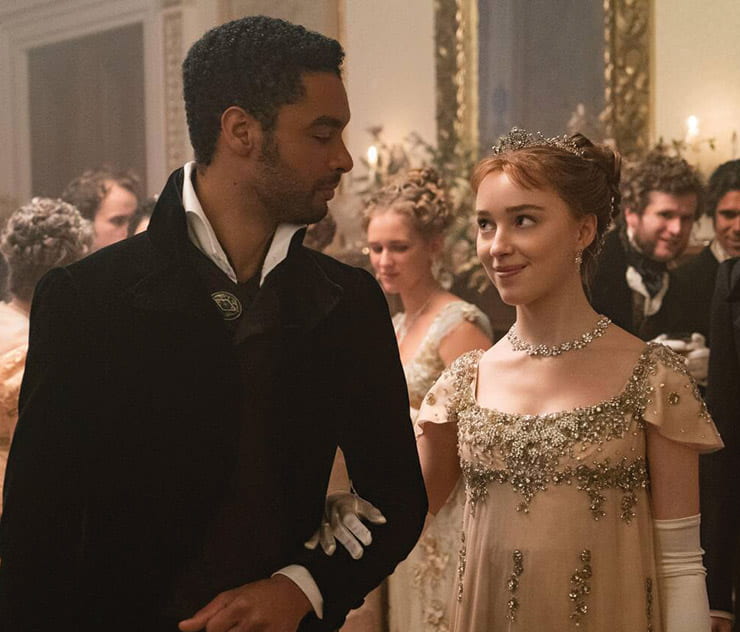
Netflix’s hit show Bridgerton — a steamy period drama based on a series of romance novels by Julia Quinn, produced by Black showrunner Shonda Rhimes
Ruiz Cantú set to work writing a close textual analysis of Bridgerton at the intersection of media studies, feminist studies and critical race theory. She found that there was much to critique, and that a lot of it was familiar. “The show is basically a reflection of the politics of post-2020 America,” she said. “It capitalizes on violence against Black people, asserts centuries-old stereotypes about Black women and men’s sexuality, and paints Black people as threats to whiteness.”
She focused on ways that the show, which offers viewers “a fantasy of a color-blind Regency era” in its diverse reimagining of Julia Quinn’s romance series, still “establishes whiteness and white supremacy.”
One way the white gaze manifests is in centering the white Bridgerton family and relegating most characters of color to the sidelines. Another is by having the show’s interracial couples intentionally avoid the topic of race.
“Through this intentional neutralization, the characters shed any racialized experiences they would typically live through and live their lives in the series as essentially white-washed Black and brown bodies,” she explained.
Despite this fact, characters still live racialized experiences; Black and non-black people of color are hypersexualized, and many of the acts of violence in the show, such as boxing and parental abuse subplots in the first season, are inflicted upon its Black male characters.
“The storyline and the society are stagnant rather than progressive,” Ruiz Cantú argued.
Though the bulk of her thesis focused on season one, which she viewed “at least fifty times,” she also closely examined season two, which introduces the Sharma sisters, who are played by British Indian actresses of Tamil descent, as protagonists. Ruiz Cantú found the new season still contained many of the problems she saw in the first season.
“In season one, one issue was the fact that they were trying to erase people’s identity. That’s kind of what color blindness does; it erases identity,” she explained. “And I’m not going to say that doesn’t still happen in season two. But I would say it’s a little bit better.”
She cites the sisters making tea, oiling their hair and wearing traditional clothes as examples of how the show isn’t “trying to put a white identity on a brown body” in its second season.
“When you’re watching television, you should get to see people who look like you,” Rhimes said in an interview with Netflix, adding that she chose to make the sisters be of South Asian descent because she wanted to feel that both the world and the representation were “as three-dimensional as possible.”
Regardless, Ruiz Cantú still believes that Rhimes reinforces the white gaze. “In her book, Black Looks: Race and Representation, bell hooks (who preferred to spell her name in lowercase letters) talks about how white supremacy has taught colonized peoples to see themselves through the white gaze. Unless people of color consciously go through a process to decolonize the mind, they will reproduce the white gaze with their world view,” she argued.
Despite the second season’s improvement, Ruiz Cantú doesn’t anticipate much change in the future — and the show has already been renewed for two more seasons.
“I mean, I’d love to see a Black character say outright during a conversation with a white character, ‘hey, this is my reality, because I’m Black and you’re white and we’re having very different experiences in this universe,’” Ruiz Cantú said. “But I don’t think that’s going to happen.”
Ruiz Cantú’s research was supported by a SURF grant.

The second season introduced the Sharma sisters as protagonists.
More Field Notes
Daylighting Hot Springs
When Zane Colvin moved from rural Wynne to bustling Hot Springs, he was wowed by the urban energy of his new home, but curious about the hot springs — where were they? Check out his bold proposal for Arkansas’ top tourist attraction.
Brand Fans
For her honors thesis, Madeline Braun explored how the Kansas City Chiefs and the Razorbacks cultivate identity loyalty within their own brands. To find the secret sauce, she distributed a survey asking both Chiefs and Razorbacks devotees to answer questions about their sense of pride and loyalty in their team.
A New Angle On Climate Change
Dawson Oakley, a biological engineering senior, Honors College Fellow and hobbyist videographer with a passion for the outdoors and sustainability, decided to merge his interests by developing a video that raises awareness about climate change issues and showcases how engineering is being used to mitigate them.
Up All Night? Enter A.I.
Gabrielle Krupa, a senior communications sciences and disorders major, and Sutton Bauman, a senior communications sciences and disorders major with a background in human development, set out to explore how new technologies impact how parents bond with their newborn children.
Pandemic Pet Care
Animal science majors Kayla DeSmet and Sabrina Cox labored in the trenches throughout the pandemic — DeSmet working at a hospital for small and exotic animals in Fayetteville, while Cox learned the ropes at a Tontitown clinic that cares for pets and livestock. For their honors thesis research, they decided to document COVID-19’s day-to-day and long-term impacts on the companion animal industry from 2020 to 2021.



